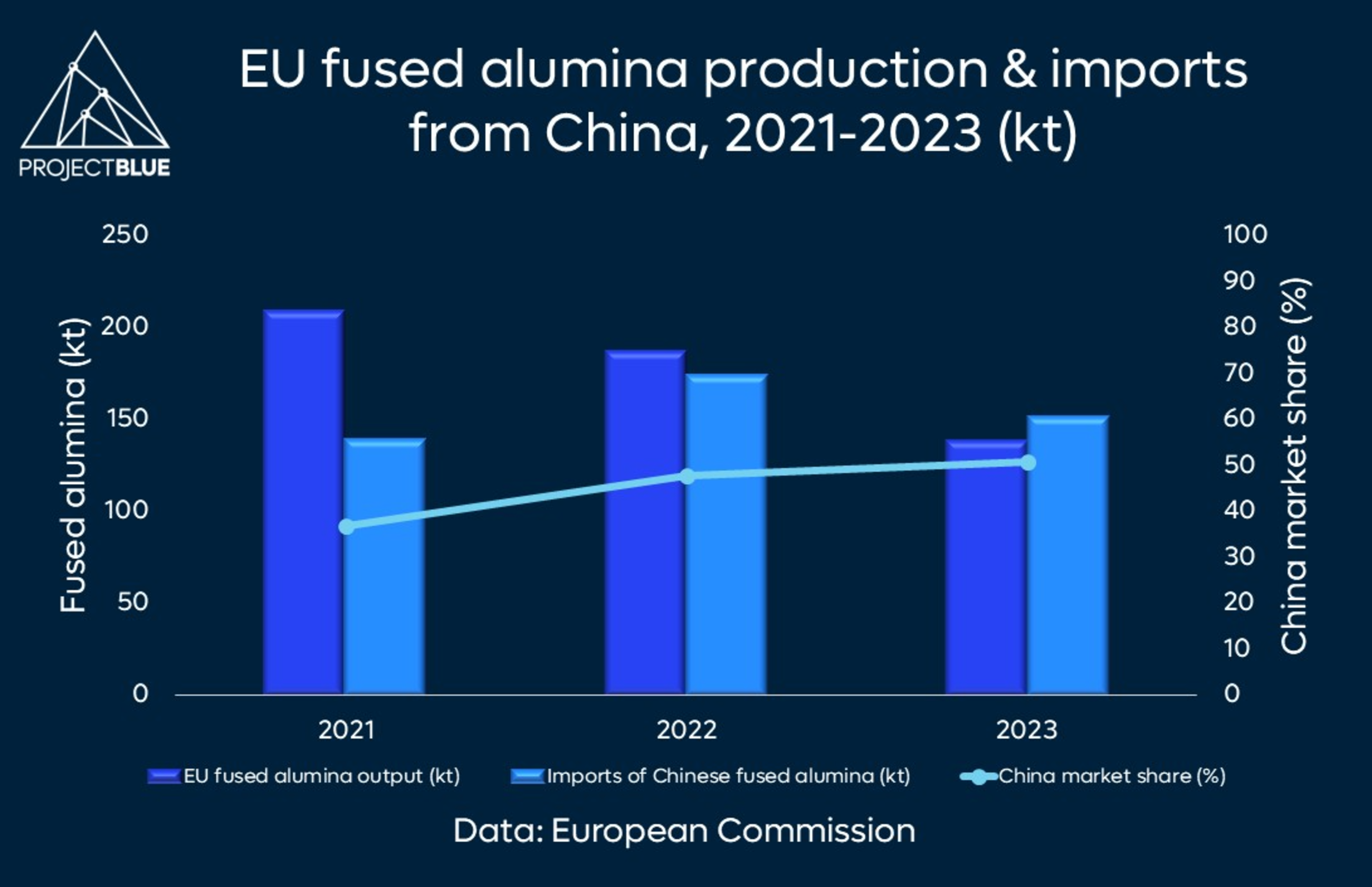Do the EU’s antidumping tariffs on Chinese fused alumina imports hinder more than help the domestic sector?
Opinion Pieces

11
Aug
2025
Do the EU’s antidumping tariffs on Chinese fused alumina imports hinder more than help the domestic sector?
EU imports of Chinese fused alumina are now subject to tariffs of up to 136%, with implications for European abrasives and refractories sector competitiveness.
The European Commission has announced the provisional results of its anti-dumping* investigation into Chinese fused alumina imports, finding that the EU industry suffered material injury, and subsequently imposing anti-dumping tariffs ranging 111.9% to 136.3%, depending on the exporting company**.
The announcement on 17 July follows an anti-dumping investigation initiated in November 2024, following a complaint filed by industrial minerals conglomerate and fused minerals producer, Imerys.
The Commission’s investigation found that utilisation of the bloc’s 305ktpy fused alumina capacity had dropped from 69% (210kt) in 2021 to 46% in 2023, with output of only 139kt that year. Meanwhile, EU imports of Chinese fused alumina rose from 140kt in 2021 to 151kt in 2023.
This saw the market share for Chinese fused alumina rise to 53% in Europe in 2023, up from 37% in 2021.
Further, the EU’s industry average fused alumina production costs were also reported to have risen from a range of €1,321-1,548/t (US$1,537-1,801/t) in 2021 to €2,010-2,360/t (US$2,339-2,746/t) in 2023, while sales prices were substantially below costs at €1,630-1,914/t (US$1,897-2,227/t) in 2023. In contrast, the European import price for Chinese fused alumina averaged €865/t (US$1,007/t) the same year.
Fused alumina’s role in Europe’s downstream industries
While EU fused alumina output dropped by 71kt over the 2021-2023 period, Chinese imports increased by only 11kt. By contrast, the Commission’s report suggests the EU’s fused alumina consumption shrank from nearly 380kt in 2021 to just under 295kt in 2023. This is perhaps more indicative of a slowdown in EU fused alumina demand as a whole, exacerbated by rising domestic production costs.
Fused aluminas are specialist electrofused aluminium oxides comprising a variety of grades, predominantly brown fused alumina (BFA) produced from bauxite feedstocks, and white fused alumina (WFA) based on alumina feedstocks. Both BFA and WFA are important raw materials used in the abrasives and refractories industries for their high hardness and thermal stability properties.
European consumption of fused alumina is reported to be 80ktpy in the refractories sector, and 200-250ktpy in the abrasives sector, according to the Commission’s report. There is also demand for fused alumina in diverse applications such as advanced ceramics, investment casting, and composite materials.
This suggests that even at 100% utilisation, the EU’s fused alumina production capacity of 305ktpy may not be sufficient to cover internal consumption, and imports from third countries are required by the domestic market. China is by far the world’s largest producer of fused aluminas and accounted for over 70% (920kt) of global exports in 2024.
Importantly, the provisional anti-dumping tariffs apply to fused aluminas themselves, and not to downstream products containing these materials. Consequently, there is concern from domestic abrasives and refractories manufacturers that tariffs could increase their raw material costs and affect their ability to compete with imported finished products.
This could have knock-on implications for Europe’s manufacturing competitiveness as a whole, with abrasives and refractories being key to the production of materials such as steel and glass, as well as the fabrication of downstream products.
*Anti-dumping tariffs apply to fused alumina materials falling under the CN codes 2818 10 11, 2818 10 19, ex 2818 10 91, and 2818 10 99, but excludes certain products including microcrystalline sintered corundum, magnesium aluminate and mechanical mixtures of artificial corundum and other substances.
** Provisional anti-dumping duties range 111.9% to 136.3% depending on exporting company. Rates for specific entities are: Chongqing Saite Corundum, 125.2%; Luoyang Runbao Abrasives, 111.9%; Other cooperating companies listed in Annex I, 118.8%; All other imports originating in China, 136.3%.